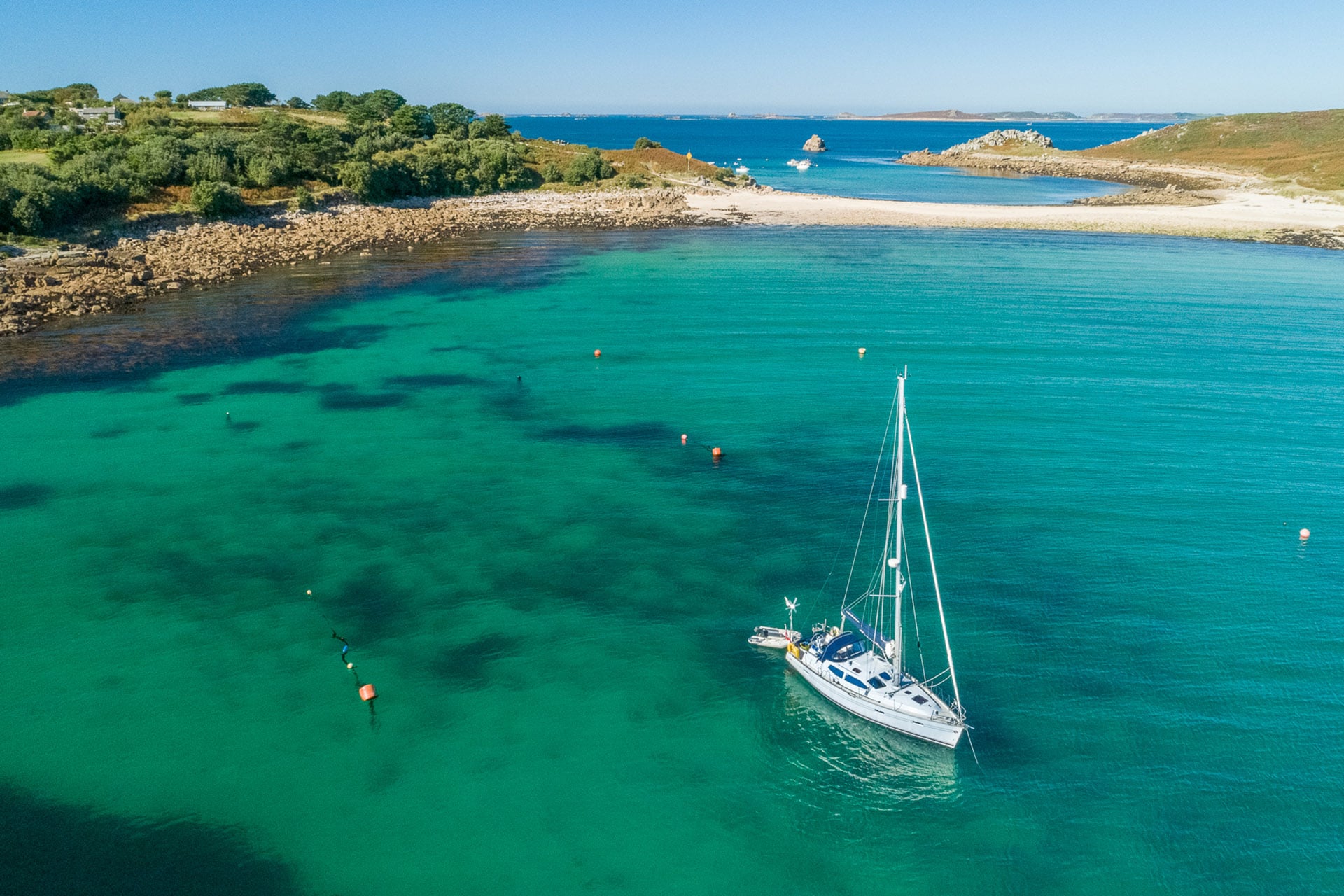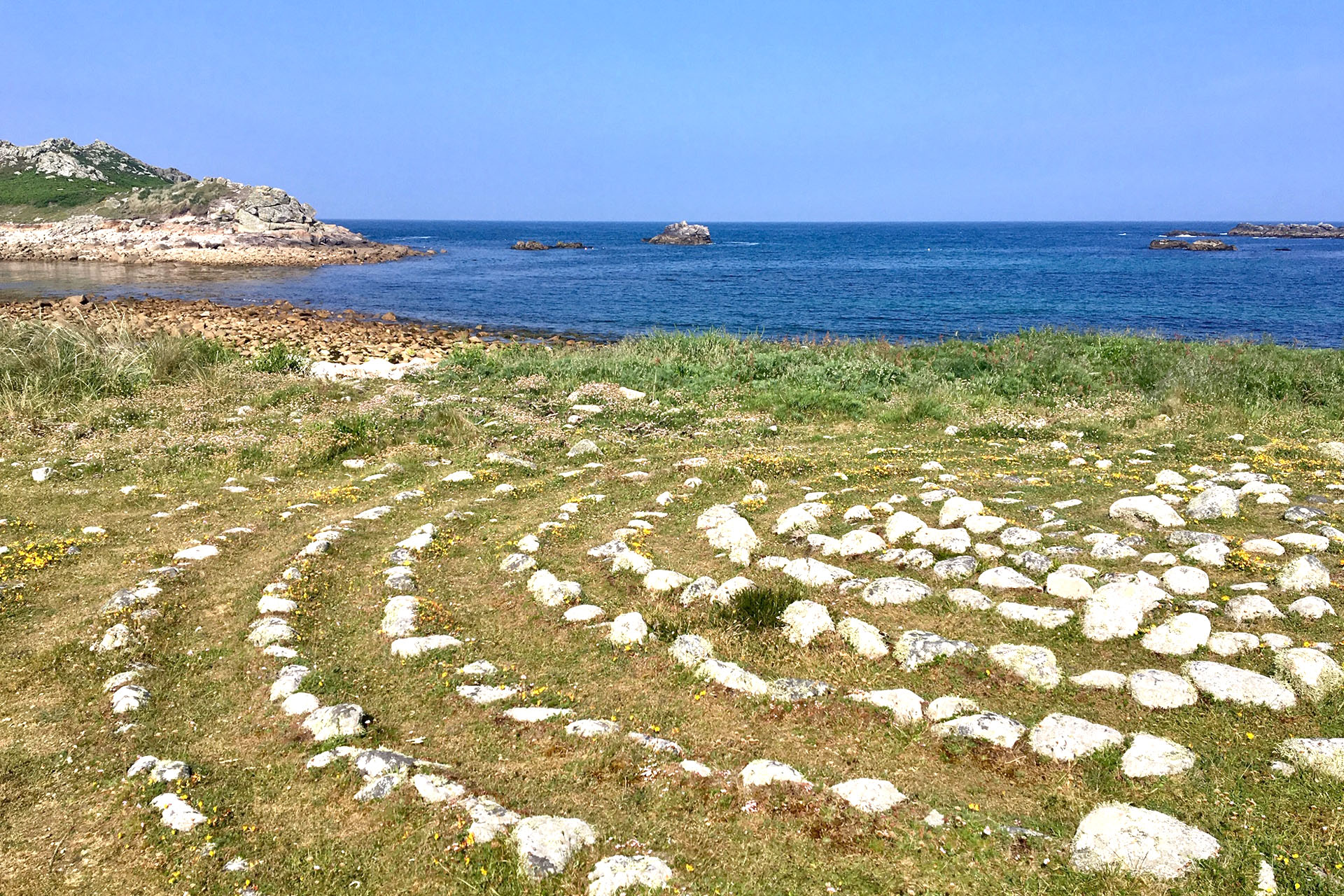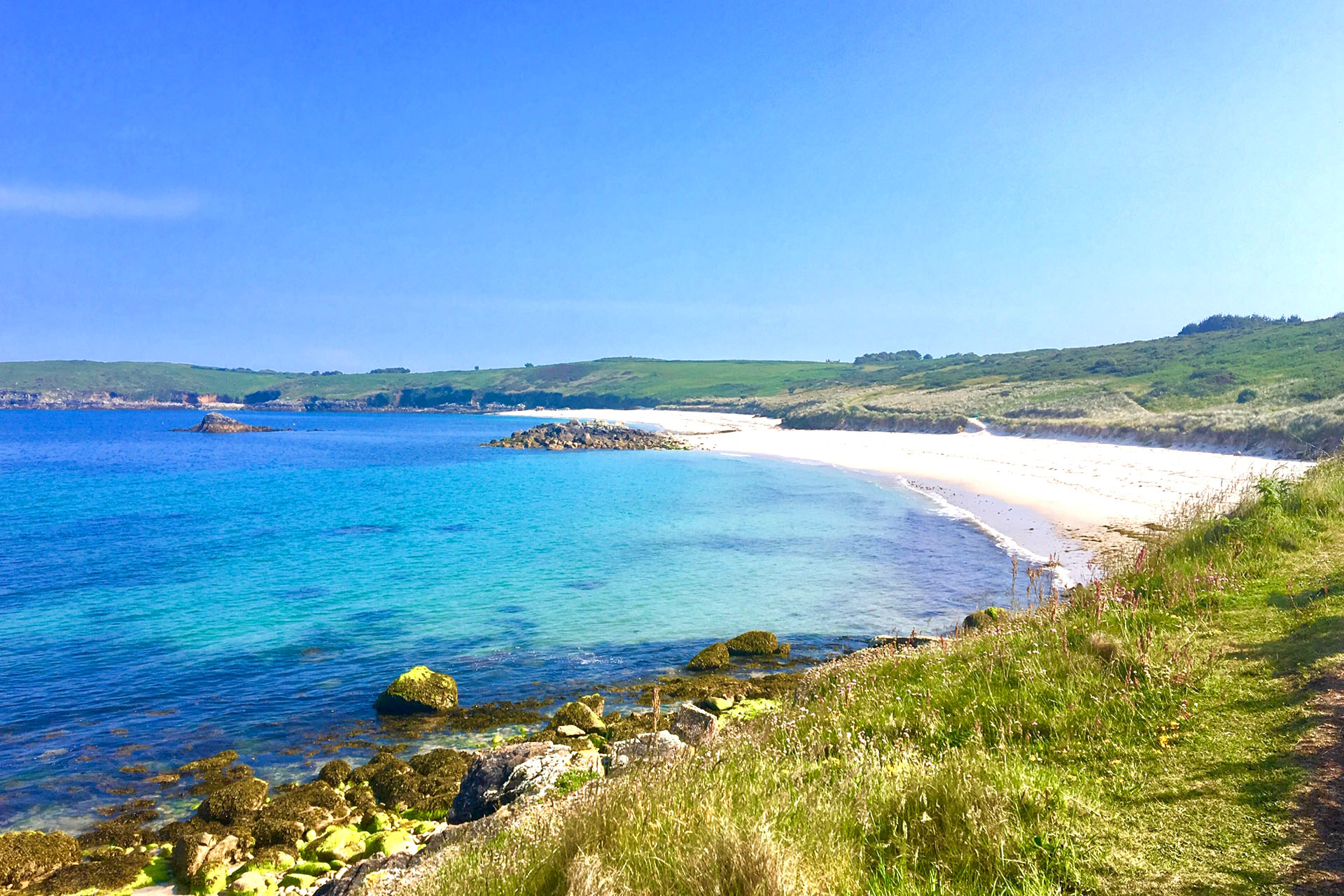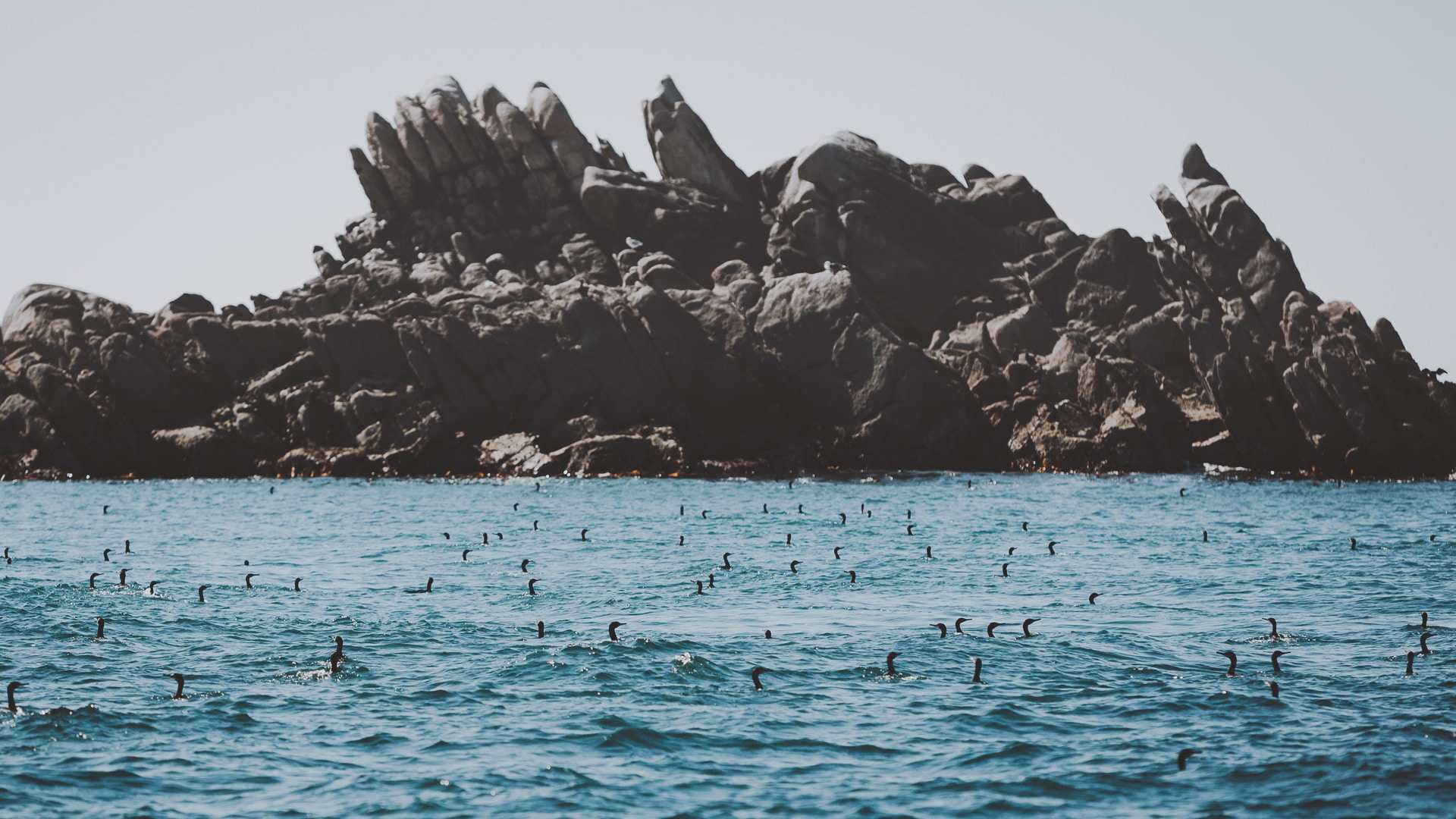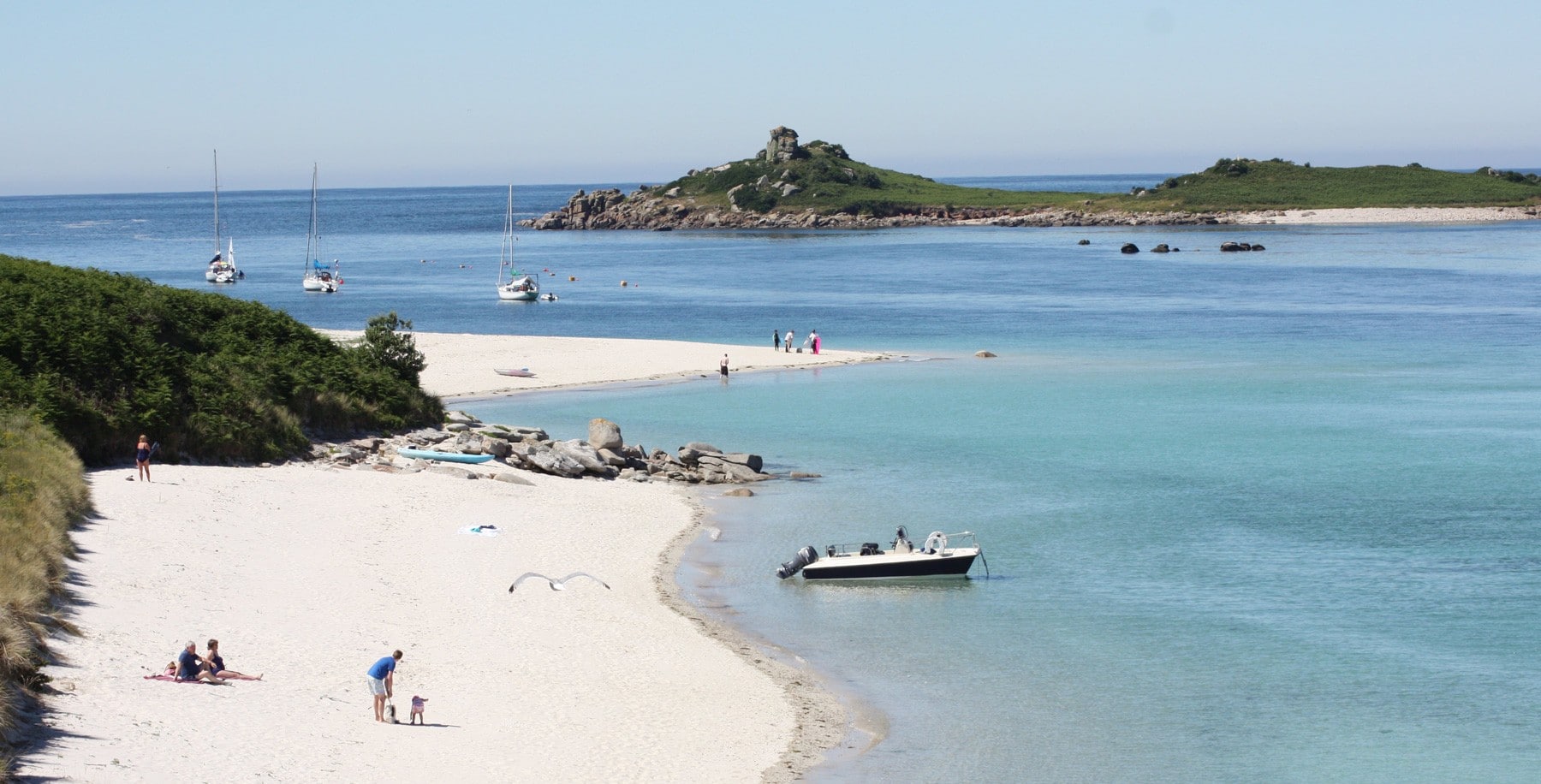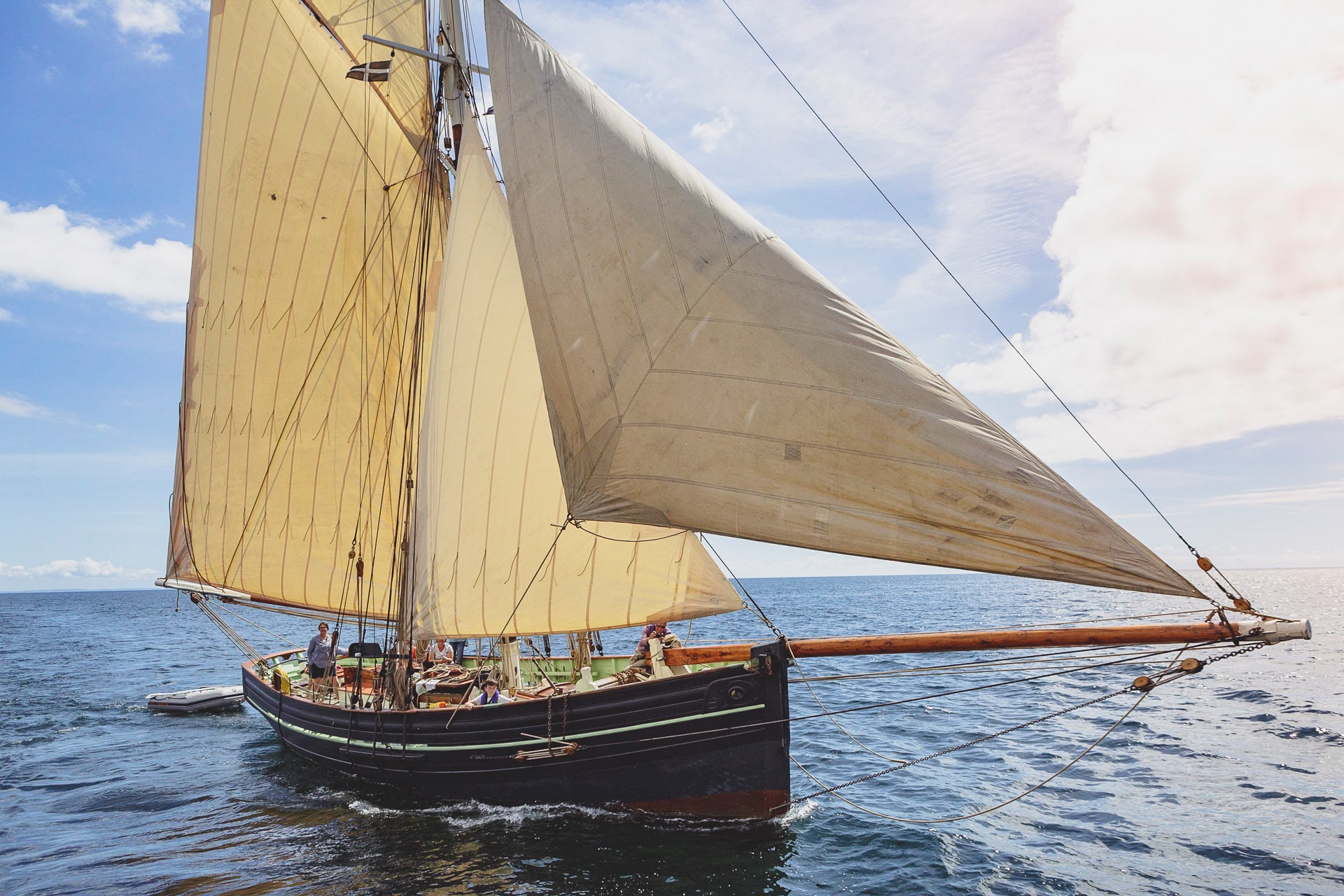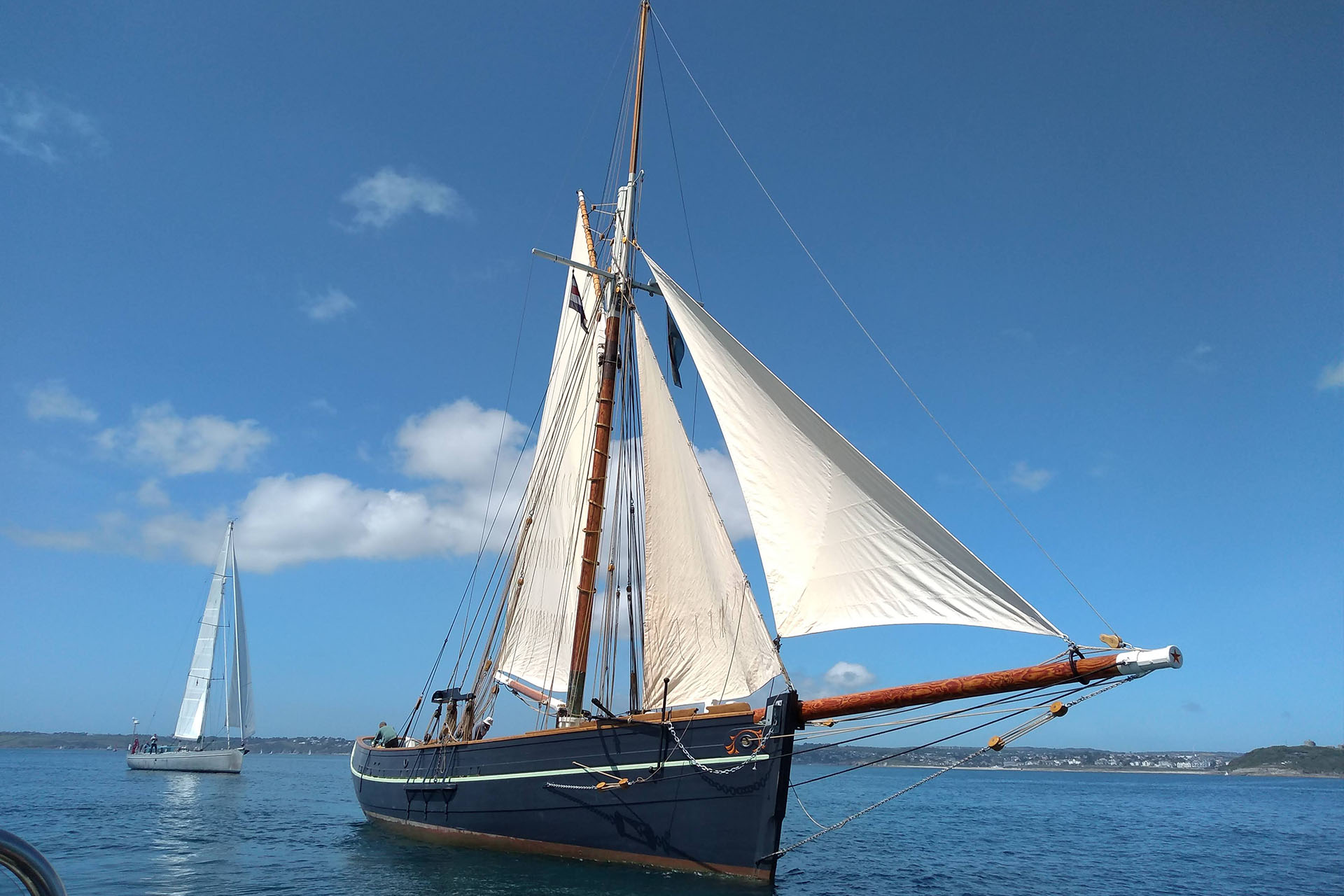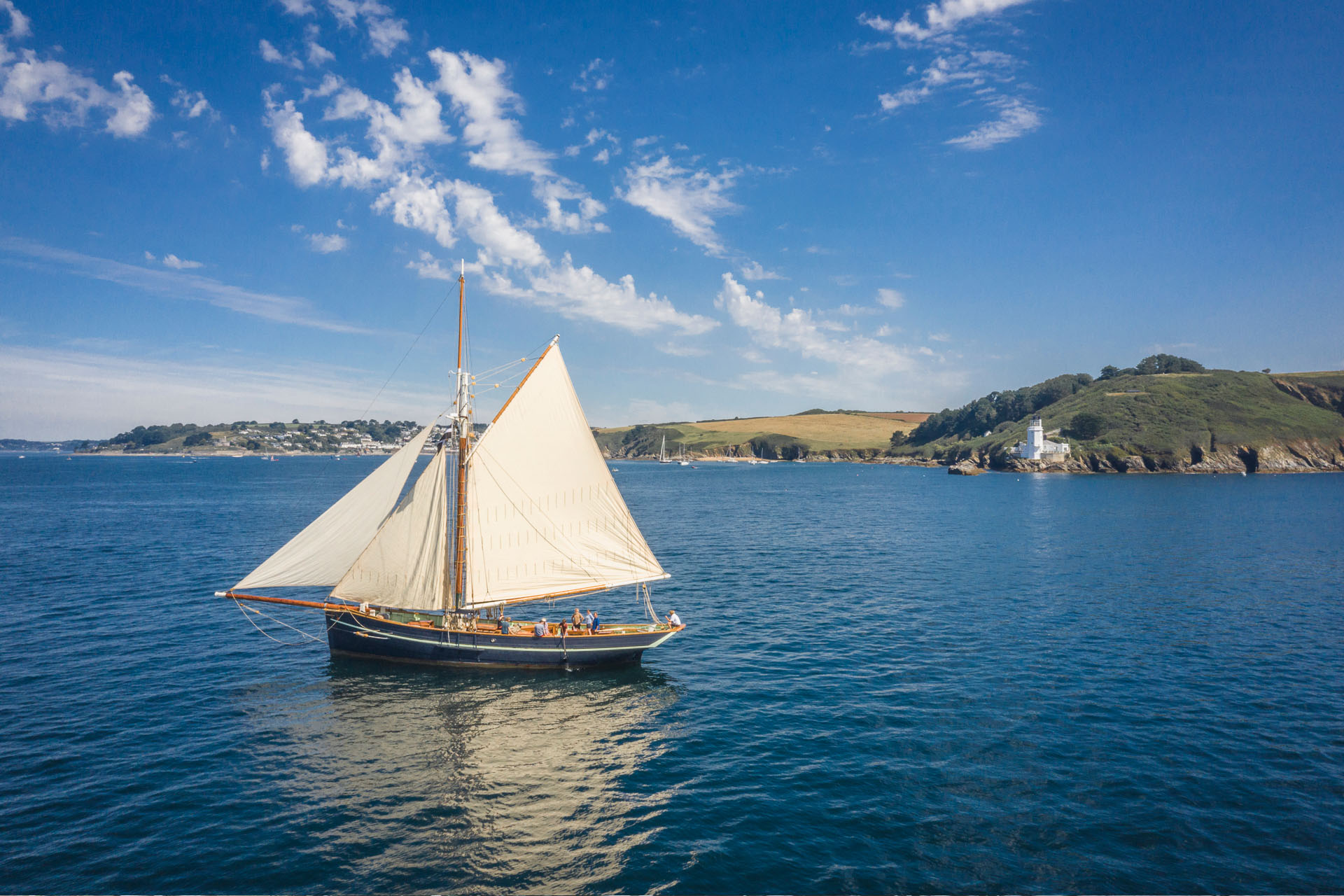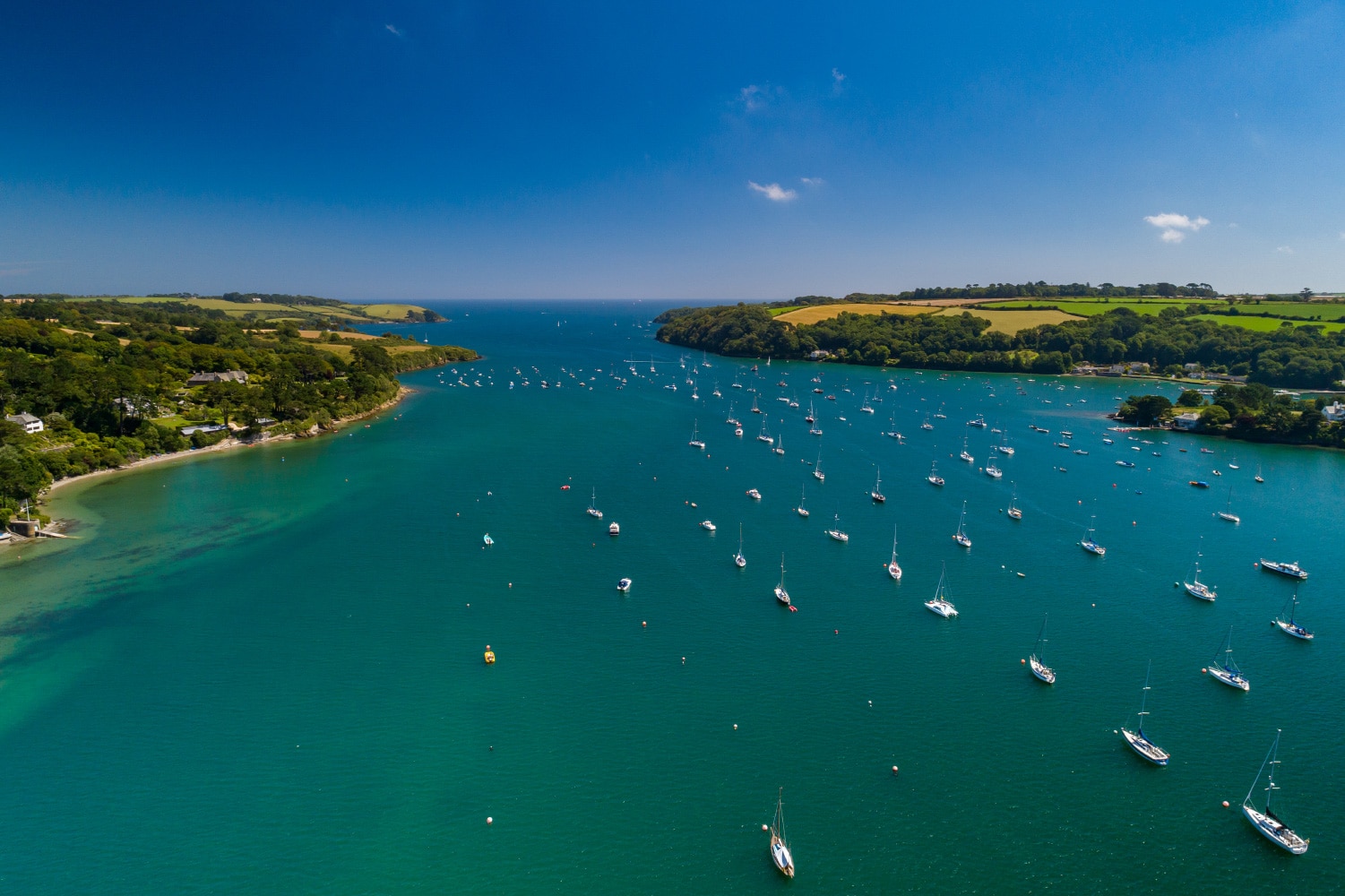
Cornwall for many is the UK’s favourite holiday destination. With its astonishingly diverse and picturesque coastline, stunning sandy beaches and meandering streets in ancient fishing ports, Cornwall has so much to offer. A sailing holiday in Cornwall is the perfect way to experience a more undiscovered Cornwall, away from the crowds with local skippers as your guide.
Over the centuries, our nation’s foundations have been built on the age of sail and Cornwall played an integral part in the design and construction of wooden sailing boats. Today, Pilot cutters, trading schooners, rowing gigs and fishing smacks have all stood the test of time and offer a huge amount of pleasure to all who visit the county.
Escaping to the outdoors for the freedom of the sea and fresh air after the restrictions of 2020 has never been more needed. Thankfully, with a sailing holiday in Cornwall, you can explore the coasts and rivers at your leisure aboard a wonderful historic fleet of comfortable sailing vessels; each one superbly restored and hosted by wonderful captains and crew.
Spring sailing in Cornwall
Wake up from winter and spend a Spring weekend sailing in Cornwall. Find Bessie Ellen in the picturesque port of Fowey with its charming narrow streets and coloured cottages stretching the foreshore. It’s no wonder that the ancient town of “Foye” is such a mecca for outdoor sailing enthusiasts who come from afar to explore this perfect little estuary.
Explore the waters of St Austell bay, shielded by Dodman point and dominated by the Cornish Alps – the remains of China Clay spoils once so important to the historic harbours of Charlestown and Par. On returning to Fowey, the stark red and white bands of the Gribben Head day mark. Built in 1832, the daymark was constructed to avoid confusion to mariners mistaking the shallow reefs of the bay with the deeper estuary of Falmouth further down the coast.
Eda Frandsen shakes of her winter blues and sets sail from Falmouth under new ownership with the lovely Mungo & Stella. The historic port of Falmouth provides an ideal starting point for a sailing holiday in Cornwall, exploring the river where each bend reads like a book, opening a new story on each turn. A morning walk ashore is one of the most relaxing ways to begin your sailing adventure as oystercatchers chatter away, herons clack in the branches and the quiet cormorants dive with a satisfying plop.
As the river gives way to mud banks, the spires of Truro glint in the morning sun. Winding back towards the sea, the Fal is truly one of the great British rivers and remarkably unspoiled on all banks. The sea beckons, and with Stella’s fabulous bakery below from her tiny galley, munch contentedly on cake and she will happily divulge the secrets of the Helford river. Equally enchanting, the Helford is a smaller river hiding creeks and quays along the way. Daphne Du Maurier penned her famous Frenchman’s Creek after a sailing voyage from Fowey with her father. Today, the Helford is a place of absolute tranquillity and is surely a little bit of heaven on earth, and a must-see for any private charter sailing holiday in Cornwall.
Pilot Cutters unite!
The clatter of blocks and the crack of the canvas never fails to excite as the fleet assembles in the bay of St Mawes for the annual Pilot Cutter Review in May. Over four days, Pilot Cutters of all ages, from new-builds to restorations, gather together to cruise in company along the coast to Fowey and back before rejoicing in friendly racing around the cans in the famous Carrick roads. Join Pilot Cutters Agnes and Pellew as they join this spectacle of sailing along the Cornish coast.
Shanties and classic sailing in Falmouth
If you love the sea and you love a shanty, then the Cornish town of Falmouth hosts one of her biggest summer events in June, the Classic Boat rally combined with the increasingly popular Sea Shanty Festival. Street markets, food stalls and singers fill the streets, pubs infused with Breton stripe clad revellers resound with harmonies of John Kanaka and Fair Spanish Ladies.
From all over Europe, singers come together in song and friendship, keeping alive the old sea shanty traditions. Out on the water, graceful classic yacht Escape, traditional trawler Pilgrim of Brixham and gaff cutter Pettifox liven the bay with other classic boats, joining the parades of sail and friendly races that take place throughout the weekend before the tired sailors retreat to a corner of a warm and friendly pub to join in the merry singing.
Summer river sailing along the Tamar
Think lazy summer days spent messing about on a river. Life could not be more carefree as our traditional Tamar barge Lynher slides gently on the tide from the wide mouth of Plymouth sound up through the marshlands of the Tamar River. This great river divides the two counties of Cornwall and Devon and navigable upstream from the mouth a Cremyll.
Today, the industrial mines of tin in this region of Cornwall lie quiet, but the once busy quays are still there – famous Cothele, quiet Haldon and majestic Morwelham each have a unique story.
The banks of the meandering river come alive with wildfowl in the early evening light and a gentle peace descends over gently rolling hills after the heat of the day. Well away from the tourist trails, the Tamar Valley is a real gem of a destination to explore. Great walks lead to historic monuments all wrapped in the unspoiled woodland valleys. Perfect for a family sailing holiday and private charter weekend away in Cornwall.
Be part of the historic Tall Ships race
Falmouth has once again been chosen as host port to the magnificent Tall Ships Race as they set off on the start of the Magellan – Elcano 500 Series, celebrating 500 years of the first circumnavigation, crossing Biscay to La Coruna before heading south to the famous ports of Lisbon and Cadiz.
Falmouth is particularly suited to hosting the regatta, from St Anthony’s head to Helford, Flushing and Pendennis, everyone can enjoy a day on the cliff tops in the clean sea air, relishing in the excitement as the all Tall Ships and their crews prepare for their own adventures.
Or perhaps you want to be closer to the action onboard Escape or Pettifox as they offer guests the chance to sail in Falmouth Bay and see the start of the Tall Ships Race and join the parade of sail. A sight not to be missed!
Head to the islands from Cornwall
As legend has it, the Isles of Scilly are all that remain of the ancient land of Lyonesse but today the Isles of Scilly are the perfect sailing holiday getaway. There is no better way to explore than by sailing boat, discovering new bays and anchorages, wildlife spotting of the Western Rocks or walking barefoot in powder white sand.
Many of our fleet of sailing vessels visit the islands, but none are more suited to the area than Agnes, a true Isles of Scilly pilot cutter and gaff cutter Pettifox who was built on islands. Built specifically for the sea around the islands, both boats have a shallow draft so are able to venture into some of the more isolated spots around St Martin and Tresco, and the hidden island of all – Gugh.
With so much turquoise water and wonderful beaches, being in the water as much as on it is a must, netting prawns in the Tresco shallows is a favourite way to idle away the afternoon. Plants and gardens are very much a part of the island industry with plenty to visit or walk the gentle paths between old flower fields Whatever the weather or time of year, the islands impart a little magic to everyone who comes here and leaves you wanting more of this simple way of life.

